Rethinking Arrow and Broadhead Performance
A NEW Series of Bowhunting Articles by the Ashby Bowhunting Foundation
Article 3: Factor 2 – Flight Quality
Would you like to hunt with arrows and broadheads that give you pass-throughs on big game shot after shot? Would you like to have complete confidence in your arrows and broadheads to give you lethal penetration and reliable kills even if you hit bone? Of course, you would! Every serious bowhunter wants that kind of performance from their setup. Join us for Dr. Ed Ashby’s Top 12 Penetration Enhancement Factors.
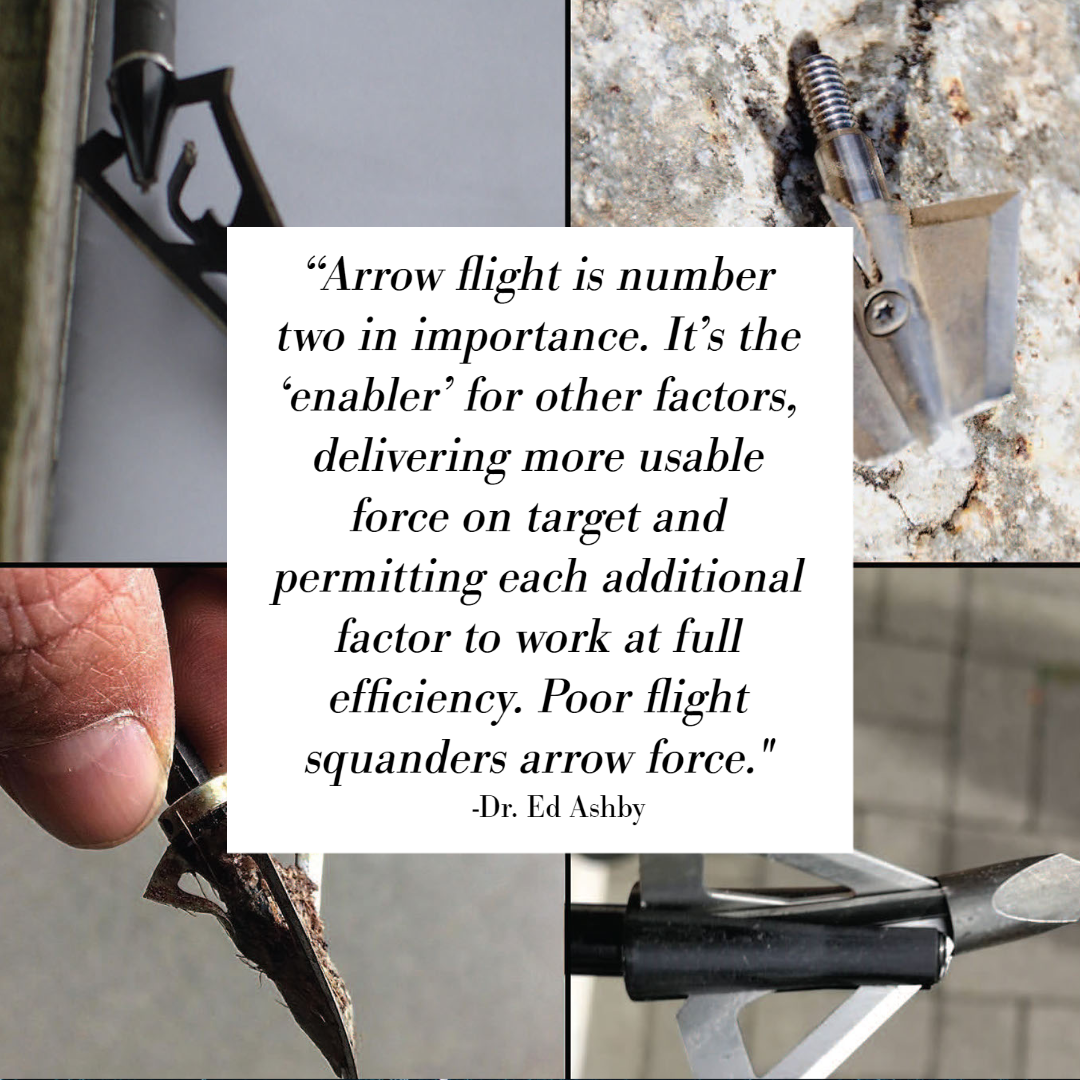
After extensive testing, Dr. Ed Ashby identified twelve specific arrow penetration enhancement factors. He then ranked them in order of importance so that bowhunters would know the order of importance of the factors to give them a roadmap of where to start, what to build into their arrow and broadhead setups, and in what order so they could create the most reliable and lethal setups possible.
To optimize your arrow and broadhead builds, it is recommended that you incorporate as many of the 12 Penetration Enhancement Factors as possible. The factor second only to structural integrity, arrow flight, is the topic for this article.
Arrow flight quality—the pursuit of perfect arrow flight—is another of the rare topics where the archery community tends to be in agreement. No one actually wants their arrow to be dancing and fluttering as it moves down range. Look on any of the online forums or social media sites, and you will see countless discussions on various methods, tips, and tricks to achieve clean flight. Unfortunately, even with all of those discussions and the multitude of videos you can look up, this factor still seems to be allusive for a lot of people. Part of that is the result of so much incorrect information floating around.
In an effort to clear up some of this confusion of how to achieve perfect arrow flight, we will be breaking down some of the high level tuning elements as well as addressing some of the more common incorrect beliefs of how you should tune your bow to achieve perfect arrow flight.
Before we dive too far down this rabbit hole though, why does flight quality matter so much? Does it really impact lethality significantly enough to be the second most important factor in penetration?
It’s all about efficiency. When an arrow is launched from a bow, it begins its flight with a fixed amount of energy. Once that arrow is “in flight,” it remains in flight until it stops moving forward. Even when an arrow is in the process of penetrating an animal, it is flying. It is simply flying through an animal rather than through the air. We want to eliminate anything that will waste any of that precious forward momentum. We want to maximize our penetration potential by eliminating any and all energy wasting elements so that we can deliver that arrow to its intended target with the most possible energy remaining. If we are successful in this, we have created a penetration-enhanced arrow and broadhead build that will have the best chance of continuing its flight all the way through the animals we are shooting—and beyond. We want our arrows to completely pass through every animal we shoot.
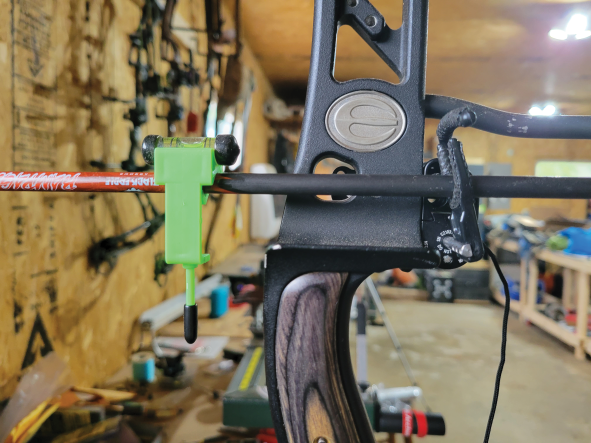
From the moment the arrow’s nock leaves the string of your bow, it is losing energy. Our goal is to ensure that it loses as little as possible in flight so that it hits the target as perfectly straight as possible. Both goals come down to the arrow’s quality of flight. When your arrow is of the proper spine, it will stabilize in the shortest amount of time possible. The cleaner an arrow launches, the faster it will also stabilize. The quicker you reach stable flight, the more you reduce the bleeding off of your stored energy. Stability in flight results in reduced drag, allowing the arrow to maintain better speed down range and stay on its intended path. Stable flight also means that the arrow and broadhead should squarely impact the target animal with the direction of force applied in line with the actual arrow, which minimizes impact paradox or impact flex and maximizes overall penetration potential.
When the arrow doesn’t achieve this stabilized state, it will continue pitching and yawing, moving back and forth as it travels down range, creating significantly more drag and increasing deviation from the desired point of impact. If the arrow hasn’t stabilized by the time of impact, then the direction of force will not align with the arrow and broadhead, causing excessive flex and excessive resistance that robs you of penetration and greatly increased odds of something failing structurally.
On top of the penetration issues that can occur from poor flight, it also directly impacts overall accuracy—especially with broadheads. This is a large reason why so many folks now believe that fixed blade broadheads are inaccurate, but it is simply not true. All the motion that occurs when an arrow does not cleanly leave a bow causes the broadhead to point in various directions leading to planing and decreased accuracy. However, when you achieve truly clean flight, this should no longer be an issue. The arrow should cleanly leave the bow, broadhead pointing at the desired point of impact, and minimal to no planing should occur. When the bow is properly tuned for the arrow, this is achievable.

Why then do so many shops and online “experts” state that fixed blades cannot fly well?
The short answer is that the prevalence of mechanical broadheads led to a reduction in the quality of tuning as it wasn’t “needed” for that style of head to hit its intended spot. Unfortunately, even if they hit the intended spot, it does not mean the flight was clean and the arrow hit squarely. Regardless of your chosen head style (fixed heads get our vote), your flight should always be as clean as possible.
So, how does someone actually know if their flight is clean? Are certain methods better than others?
The first step in your process should be having the bow looked over to verify that it is actually in factory spec. For a traditional bow, this may be as simple as verifying tiller, brace height and nocking point. For a compound or crossbow, there are more factors involved such as cam timing, cam sync, cam lean, rest position, etc. Once these elements have been confirmed as within the factory tolerances, then it’s time to proceed to verifying flight quality and fine-tuning.
One thing to keep in mind throughout this process is that a bow is a fairly simple machine. The more consistent you are in operating it, the more consistent the results will be. If you are seeing results change from shot to shot (without adjustments to the bow), then the most likely answer is that something in your shot cycle is inconsistent. Take your time and focus on improving consistency. Small changes in your grip, anchor, or overall body position can significantly improve your consistency, and at the end of the day, we all want to be consistent.
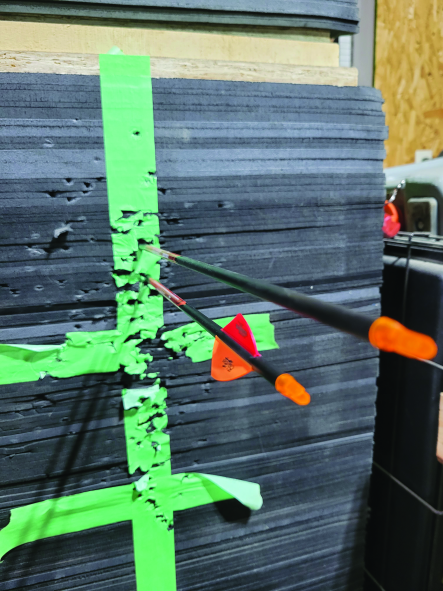
Fletched Shaft Flight Verification: The most common method is to shoot a fletched shaft through paper. There is nothing inherently wrong with this method, but it can leave out a lot of detail, and as many have experienced, it does not necessarily mean that broadheads will fly well. The biggest issue is that in most cases a single distance is verified. Without checking multiple distances, you will have no idea whether the flight is actually stable, or if your clean tear is simply due to the arrow being in the middle of an overcorrection at that specific distance. A better approach to this method would be to check multiple distances, allowing you to have a clearer picture of what the arrow is doing throughout the flight path. The goal would be to confirm that flight appears clean from 2-3 yards out to a minimum of 10 yards.
Bare Shaft Flight Verification: A step beyond using a fletched shaft would be to follow a similar process with a bare shaft. The entire purpose of using vanes or feathers is for the shaft to be able to correct itself. Removing this correction will allow you to see how the shaft is naturally leaving the bow and fine tune to reduce the level of correction the fletching will have to make. Keep in mind that since there is no correction, the longer a bare shaft is in flight, the more it will drift (the larger the tear will get). What may look like a tiny tear at 5 yards could be a gigantic tear at longer range so start the process up close. Once a specific distance looks perfect, then step back to your next spot and see how it has changed. This will keep the tears smaller and allow you to make smaller adjustments to slowly walk it in to where it needs to be. Again, the goal would be to achieve clean flight from 2-3 yards out to a minimum of 10 yards.
Regardless of the method used, you should always confirm your results. If you know that you have clean tears at multiple distances AND your broadheads impact the same as your field points, then you can be pretty confident that your flight is clean, and you are ready to hit the field. If your broadheads are off the mark then there are likely some small adjustments that still need to be made.
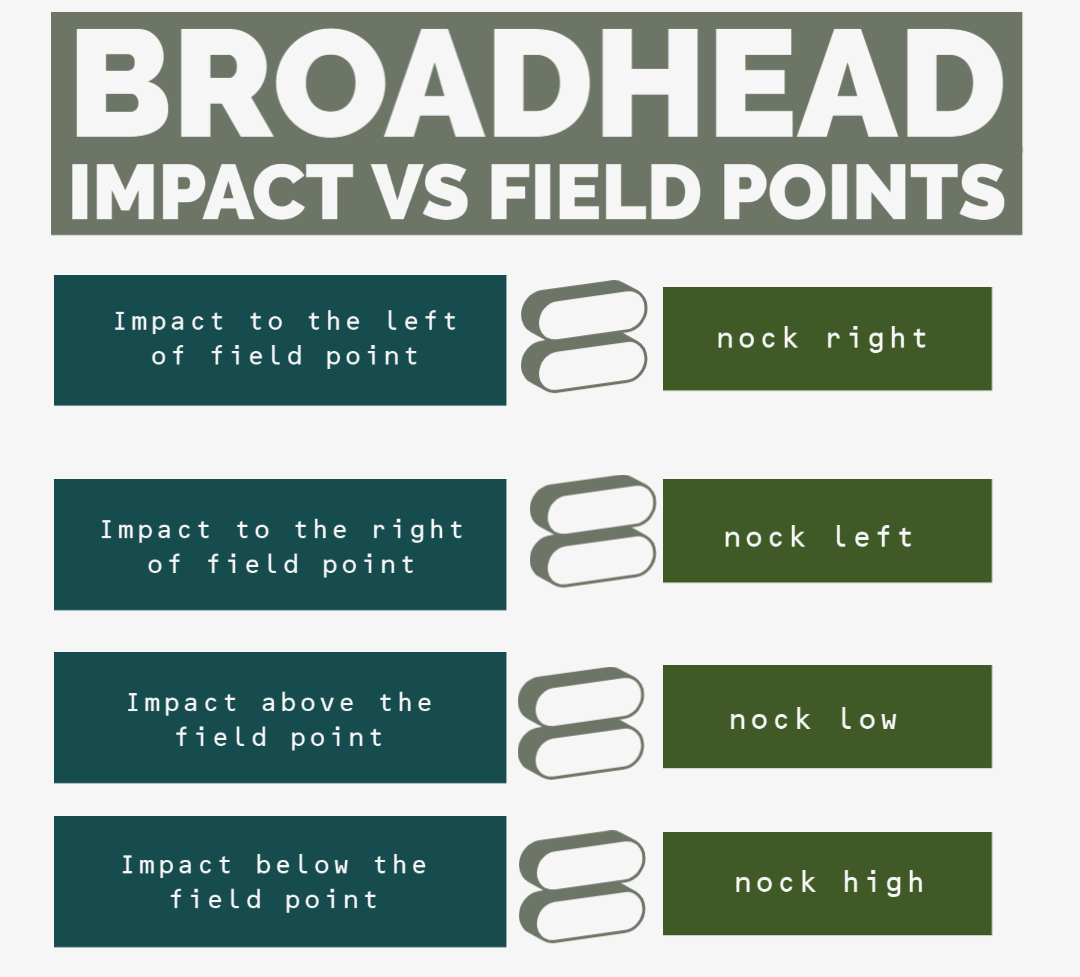
The good news is that shooting your broadhead will tell you a majority of the same information a bare shaft will, so there is no need to go all the way back to square one. Just know that the more attention you pay to the initial steps, the less fine-tuning should be needed at this stage.
- Impact to the left of field point = nock right
- Impact to the right of field point = nock left
- Impact above the field point = nock low
- Impact below the field point = nock high
The actual corrections for these situations can be dependent on the type of bow in question, but the big thing to remember is that the reaction is due to unwanted pressure or motion. Something like a left/right tear could be caused by your grip (hand torque), facial pressure on the string, or the string path not being aligned with the shaft (rest position/cam lean). The more elements that you can confirm and eliminate, the easier it will be to determine the actual cause.
Unfortunately, we do not have enough space to go into detail on every correction for every type of bow, but there is one element that should be noted. The dynamic reaction of the shaft can play a part in the tear that is occurring, but unless the bow in question is designed to shoot off-center, spine is not the root cause of the tear.
Off-center bows, such as a lot of older style traditional bows, will require a specific amount of flex to achieve clean flight. This is because the arrow is forced to flex AROUND the bow. Too little flex and it will push off the riser; too much flex and it will not be able to naturally recover in line with the shot. This type of bow will be spine sensitive and the arrow itself will need to be part of the tuning process.
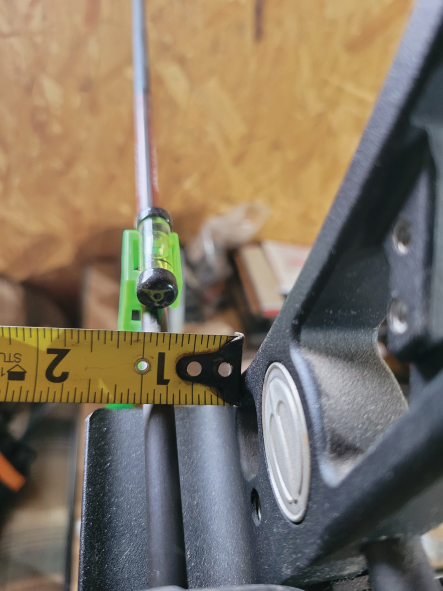
The vast majority of modern bows on the other hand are designed to be shot down the center. The shaft has no need to flex around anything as long as the string path is properly aligned with the shaft so that force can be applied in line. An overly stiff shaft will create more pressure if there is any misalignment—which can result in a tear—but the root cause is the misalignment and not the spine. In most cases either the rest is slightly out of position, or the string path is inducing some level of nock travel. Due to this a stiff spine will actually allow for better fine tuning as it will make these misalignments more apparent. For this reason, I normally recommend tuning with the lowest point weight available and then proceeding with final verification using your desired point weight and broadheads. When everything is set perfectly, you should be able to start at 100gr and have clean tears until you reach a point weight that results in a weak reaction that will typically be some form of a high tear as the shaft will be flexing along the path of least resistance. The mass at the front of the shaft will resist coming back in line as the shaft recovers and the light tail will come up as the shaft straightens out.
The one caveat to this is that in a lot of cases a press and an experienced technician will be required to achieve this and unfortunately, these are two things that are not available to everyone. At the end of the day, you need to ensure that your flight is as perfect as possible even if it means stepping slightly outside of the box. If you are dealing with a shop that will not adjust cam lean or yokes to correct a cam lean issue, then moving your rest out of center may be the only option to get everything flying well. This can create its own issues, as it will essentially turn the bow into an “off center” bow meaning that spine will be more critical in order for a proper recovery to occur; however, it will allow clean flight to be achieved, which always the end goal. If this situation sounds familiar, it may be time to look for a new bow tech or to start looking into doing your own work. If you are one of the lucky ones that has a tech willing to put in some extra effort, be thankful and tip well.
The bottom line is this—to optimize your penetration potential, you must do whatever it takes to achieve perfect flight. Perfect arrow flight is the second most important of the Top 12 Penetration Enhancement Factors. All bowhunters should know how to tune their bows and should be able to achieve perfect arrow flight. Sometimes it’s easy. Sometimes it takes a lot of effort, but in the end it is worth it! Perfect arrow flight is so important that it’s not an option. Don’t stop tuning until you achieve perfect arrow flight.
Get to know the authors!
[author] [author_image timthumb=’on’]https://www.biggame.org/wp-content/uploads/2021/06/dr-ed-ashby-bio-pic-002.jpg[/author_image] [author_info]Dr. Ed Ashby
Dr. Ed Ashby, a legend in the archery hunting community, dedicated more than 27 years to the study of arrow performance and broadhead lethality. His involvement in the historic Natal Study helped validate just how lethal archery equipment could be on all sized big game animals and was the main reason that bowhunting was ever legalized in South Africa. [/author_info] [/author]
[author] [author_image timthumb=’on’]https://www.biggame.org/wp-content/uploads/2021/06/rob-hummel-bio-pic-002.jpg[/author_image] [author_info] Rob Hummel
With a background in fabrication and engineering, the current standard being pushed by the industry didn’t feel right when Rob first entered the world of archery. Fortunately, after being directed to some of the reports from Dr. Ed Ashby’s field research it all began to align with the mechanics he already understood. Over the last decade, Rob has continued pushing to bring consistent lethality to the forefront of the archery industry. [/author_info] [/author]
[author] [author_image timthumb=’on’]https://www.biggame.org/wp-content/uploads/2021/06/todd-michael-smith-bio-pic-002.jpg[/author_image] [author_info] Todd Smith
For over 40-years, his passion for bowhunting and thirst for knowledge and understanding have driven Todd to learn everything he could about arrows, broadheads, and arrow lethality. Todd is an author, public speaker, and has helped to educate tens of thousands of bowhunters on how to set themselves up for bowhunting successes by using proven – lethal – arrow and broadhead set-ups.[/author_info] [/author]

[box] What’s the Ashby Bowhunting Foundation all about?
The Ashby Bowhunting Foundation is dedicated to continuing Dr. Ed Ashby’s research and to ensuring that bowhunters everywhere will have free access to information that will help them build extremely lethal and reliable arrow and broadhead setups for all species of big game. The foundation was started in 2017 to continue the work of Dr. Ed Ashby that has benefited bowhunters worldwide for decades. The Foundation’s goal is to provide information to achieve the highest possible success rate and reduce the wound/non-recovery rate of big game to the lowest level possible. Through a program of continuing research, the Foundation seeks to find the most lethal arrow setups, taking into account all possible hits under real hunting conditions, controlled testing and using freshly culled animals. The results of this testing is always made available to the global bowhunting community free of cost, utilizing multi-media outlets for information and test results. The Ashby Bowhunting Foundation is excited for this opportunity to partner with DSC and to share these articles with all DSC members so they can make informed decisions of whether to change to arrow and broadhead combinations that will increase their odds of bowhunting success under all situations and conditions. For more information please visit: https://www.biggame.org/ashby-bowhunting-foundation [/box]



